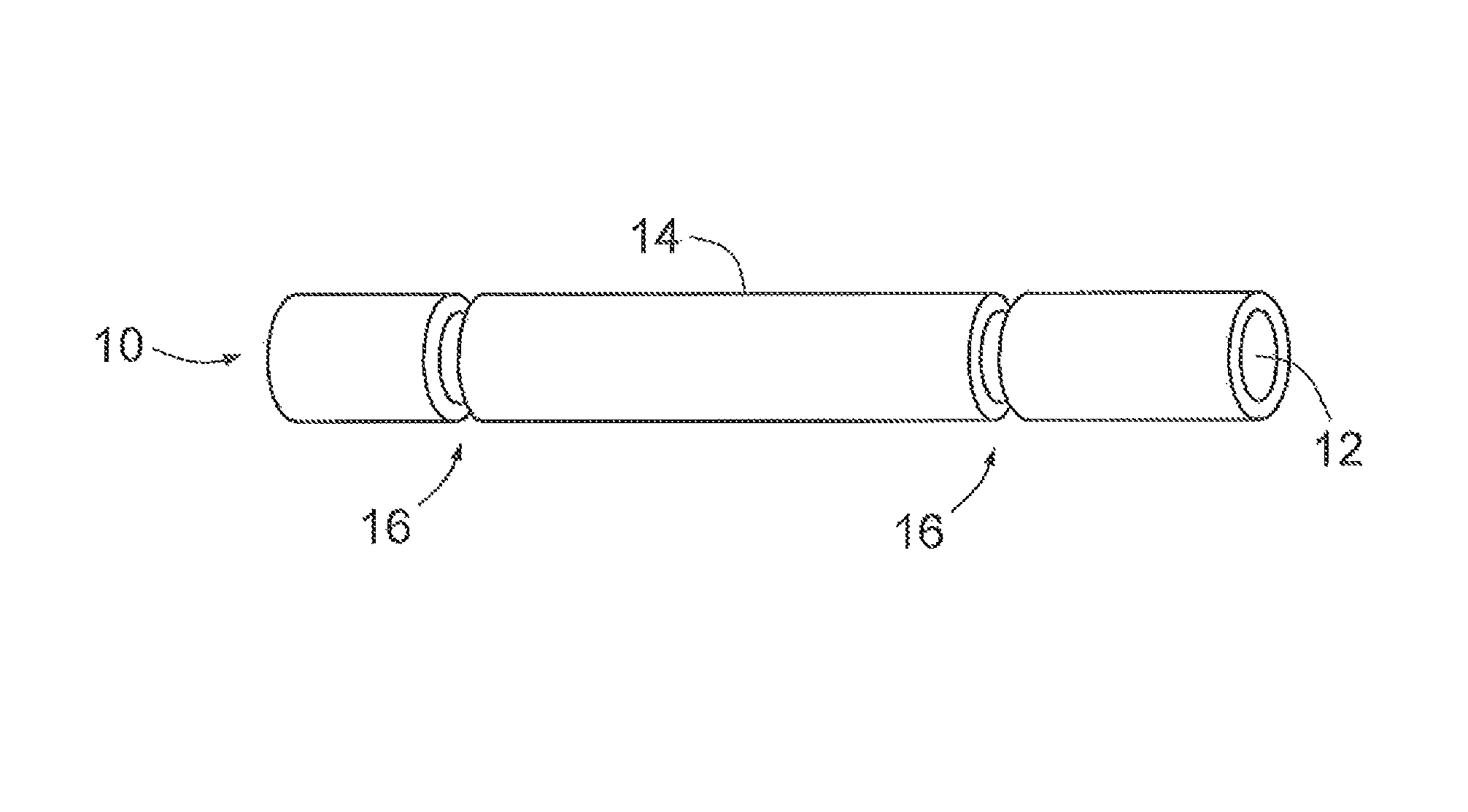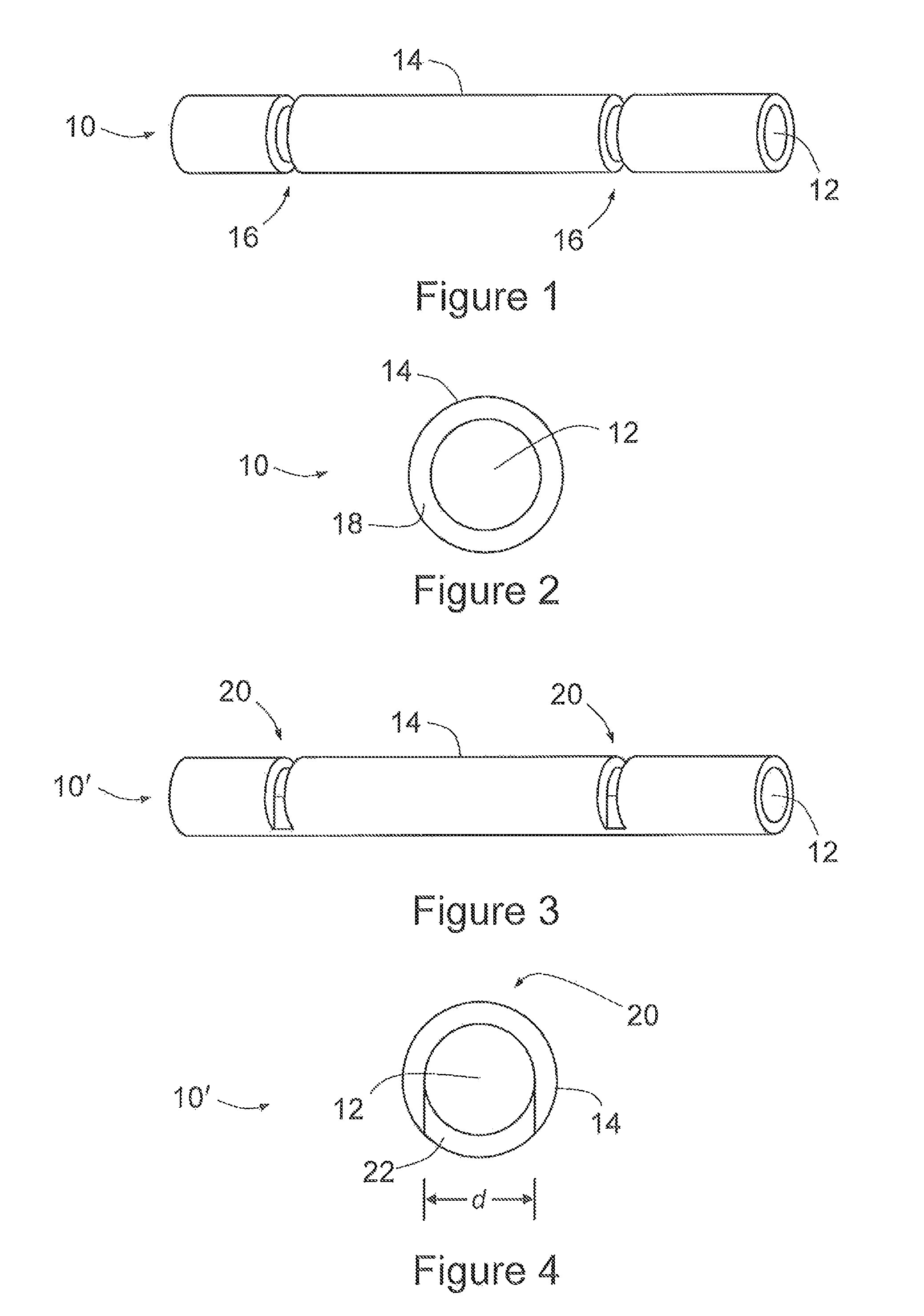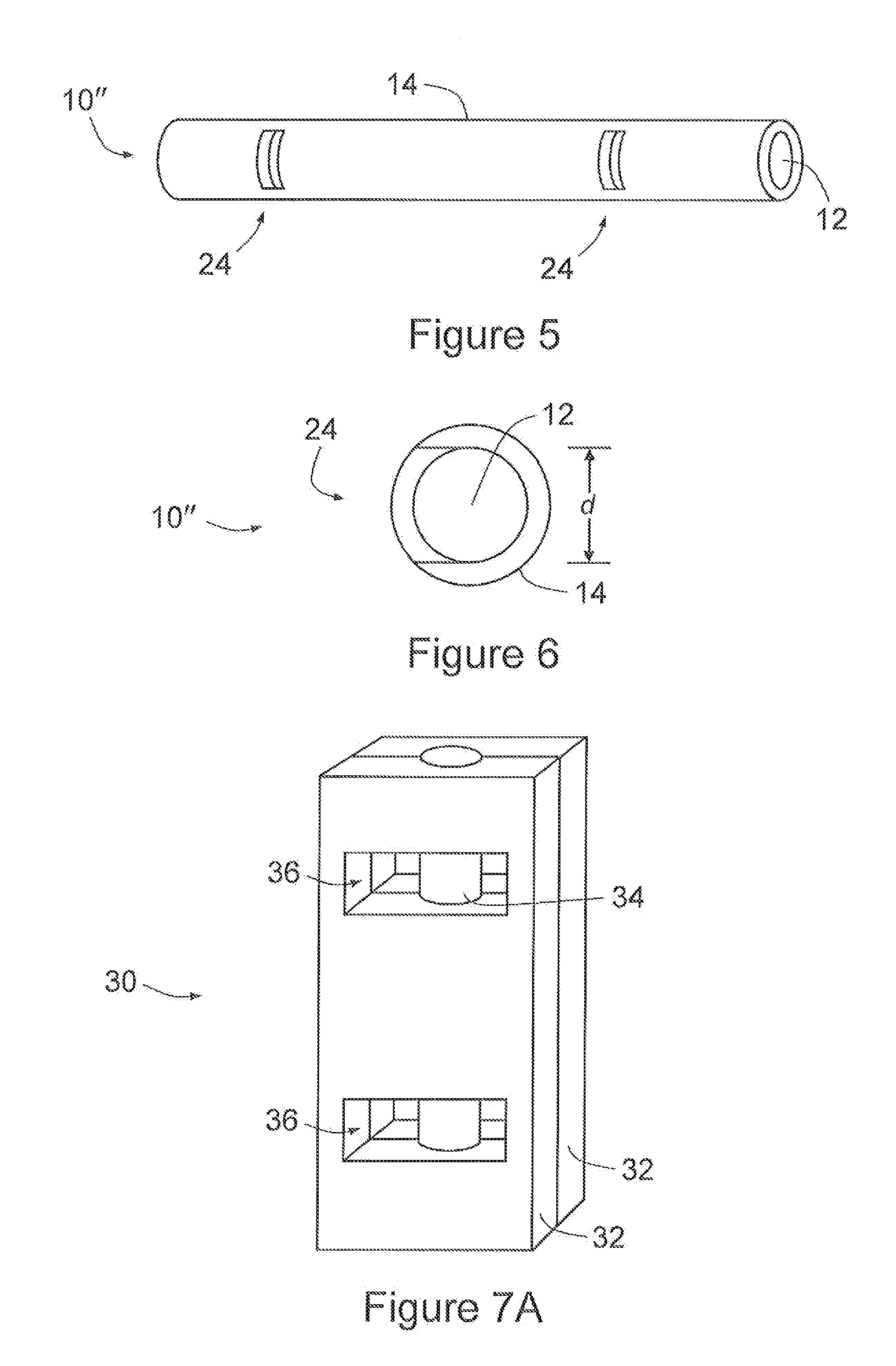Degradation sensor
a technology of degradation sensor and conductivity, applied in the field of sensors, can solve problems such as loss of conductivity of the conducting member over its length, and achieve the effect of loss of conductivity
- Summary
- Abstract
- Description
- Claims
- Application Information
AI Technical Summary
Benefits of technology
Problems solved by technology
Method used
Image
Examples
Embodiment Construction
[0044]A sensor for detecting corrosion or other deterioration in typically metal surfaces, according to an embodiment of the present invention, is shown generally at 10 in FIG. 1. Sensor 10—formed from insulated wire (and hence also referred to as a ‘wire sensor’)—comprises a thin wire 12 of 25 μm to 200 μm diameter and, covering the wire, a thin insulating material 14, such as polyurethane or nylon, that is a few microns in thickness. Sensor 10 also has periodically spaced notches 16 where wire 12 is exposed, that is, there is no overlaying insulating material 14. Notches 16 are spaced 100 μm apart, though it will be appreciated that this spacing can be smaller or greater, including of the order of millimetres or more. Each notch 16 has a width—along the length of sensor 10—of 5 to 30 μm; in many applications a width at the smaller end of this range is preferable.
[0045]As will also be appreciated by those skilled in the art, sensor 10 may be of essentially any desired length, and m...
PUM
 Login to View More
Login to View More Abstract
Description
Claims
Application Information
 Login to View More
Login to View More - R&D
- Intellectual Property
- Life Sciences
- Materials
- Tech Scout
- Unparalleled Data Quality
- Higher Quality Content
- 60% Fewer Hallucinations
Browse by: Latest US Patents, China's latest patents, Technical Efficacy Thesaurus, Application Domain, Technology Topic, Popular Technical Reports.
© 2025 PatSnap. All rights reserved.Legal|Privacy policy|Modern Slavery Act Transparency Statement|Sitemap|About US| Contact US: help@patsnap.com



